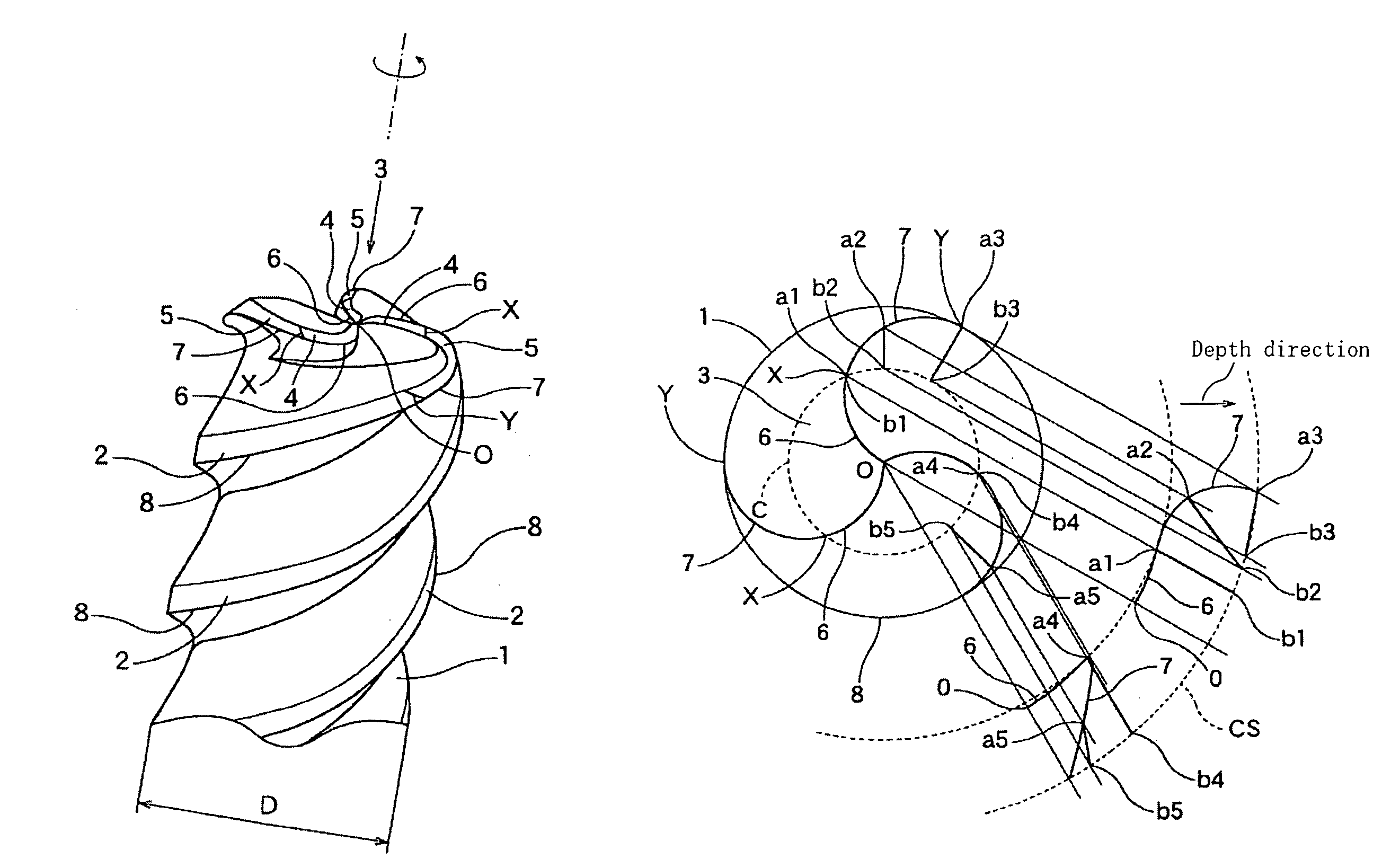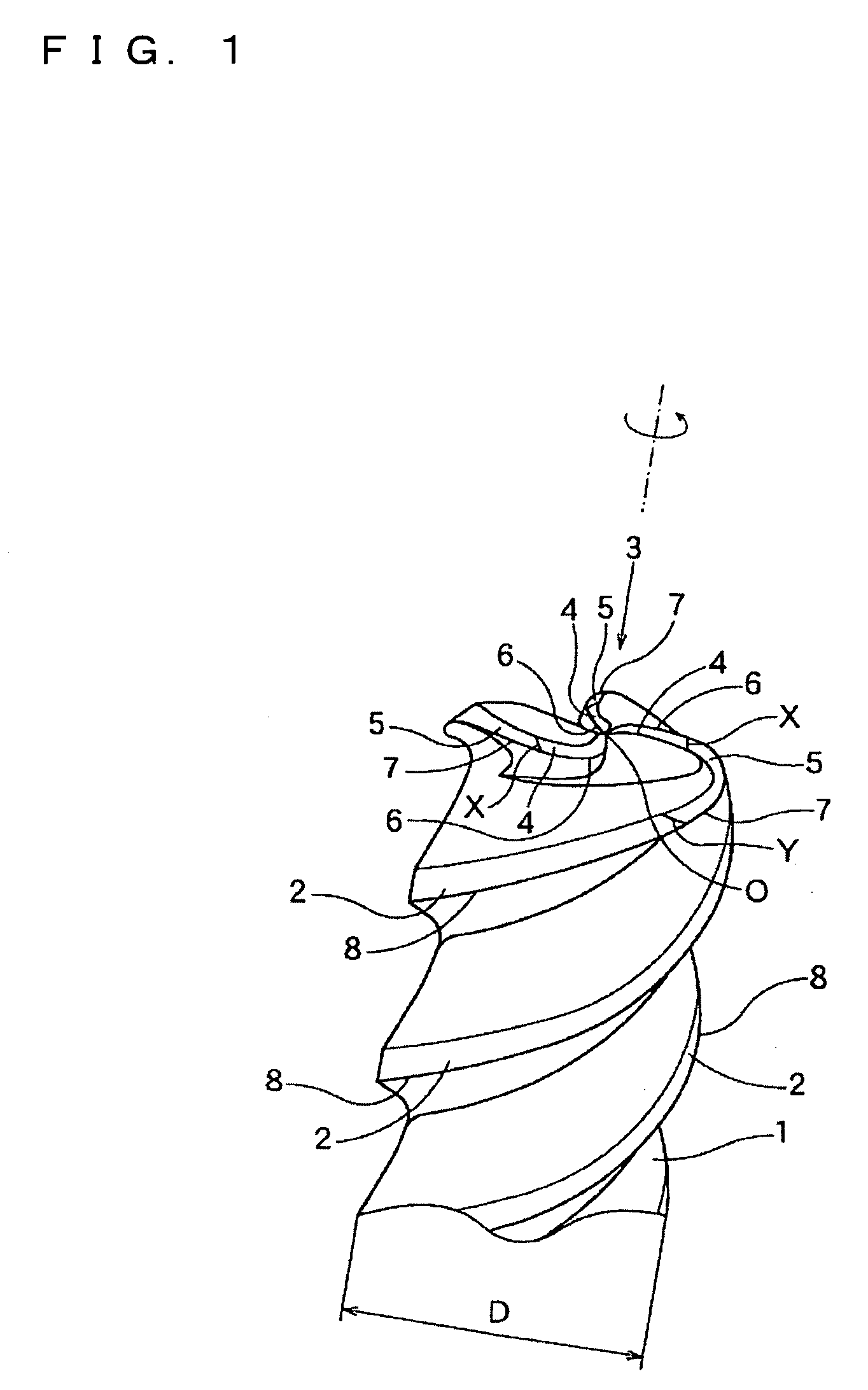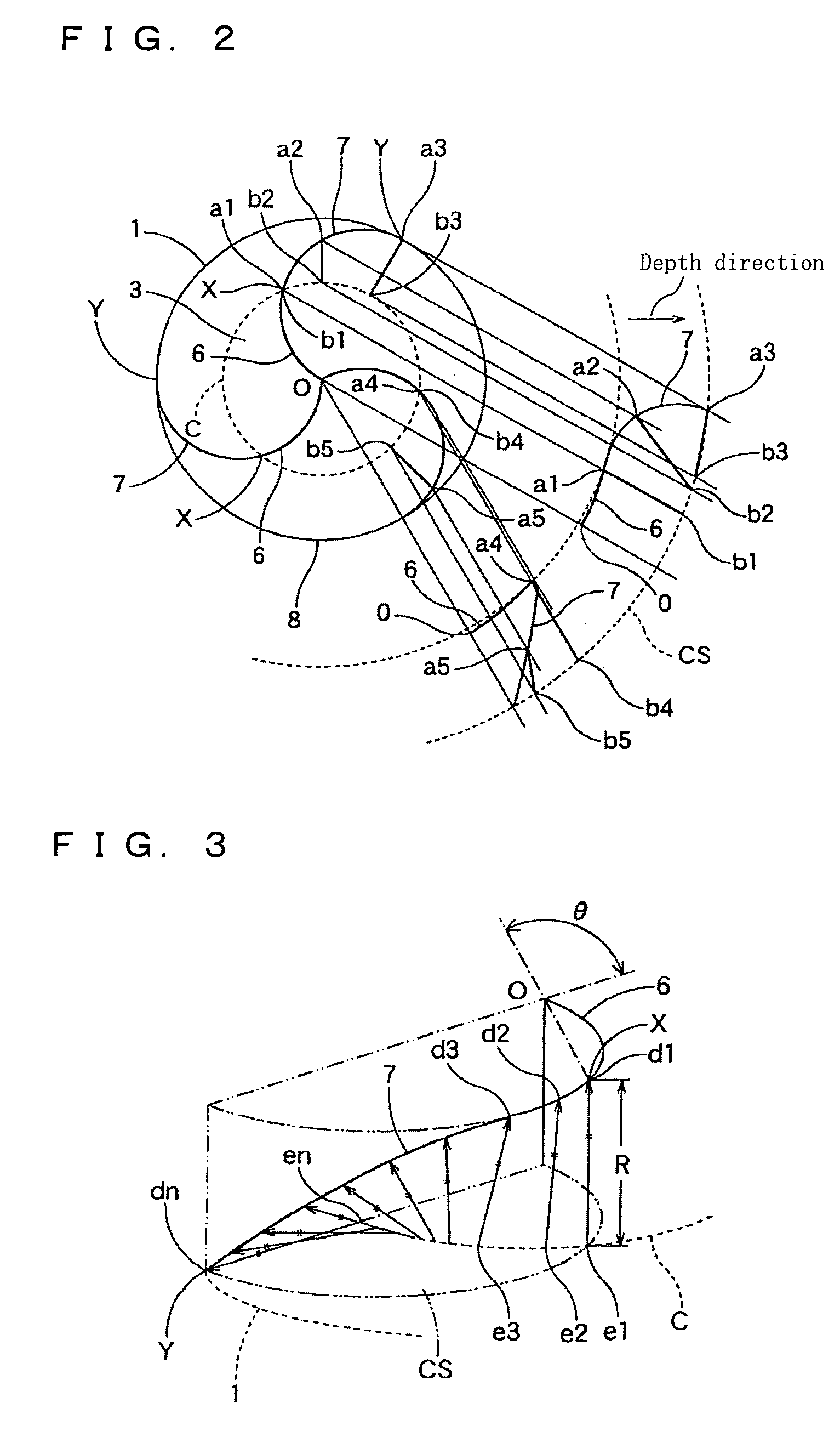Radius endmill
a technology of endmill and radius, which is applied in the direction of metal-working equipment, metal-working apparatus, milling equipment, etc., can solve the problems of increasing the dependency on electric discharge machining, difficulty in cutting operation, and chattering problems, and achieves the effect of improving the durability of the tool
- Summary
- Abstract
- Description
- Claims
- Application Information
AI Technical Summary
Benefits of technology
Problems solved by technology
Method used
Image
Examples
Embodiment Construction
[0015]Hereinafter, there will be described embodiments of the present invention, with reference to the drawings.
[0016]FIG. 1 is a perspective view showing a major portion of a three-tooth (three-flute) radius endmill constructed according to an embodiment of the invention. FIG. 2 is a view for explaining bottom cutting edges and rounded corner cutting edges of the radius endmill. FIG. 3 is a view for explaining each rounded corner cutting edge of the radius endmill. FIG. 4 is a view for explaining effects of the radius endmill. FIG. 5 is a perspective view of a chip produced when the radius endmill is used. FIG. 6 is a view for explaining bottom cutting edges and rounded corner cutting edges of a three-tooth radius endmill according to a modification of the embodiment. FIG. 7 is a view for explaining bottom cutting edges and rounded corner cutting edges of a two-tooth (two-flute) radius endmill according to another embodiment. FIG. 8 is a view for explaining bottom cutting edges and...
PUM
 Login to View More
Login to View More Abstract
Description
Claims
Application Information
 Login to View More
Login to View More - Generate Ideas
- Intellectual Property
- Life Sciences
- Materials
- Tech Scout
- Unparalleled Data Quality
- Higher Quality Content
- 60% Fewer Hallucinations
Browse by: Latest US Patents, China's latest patents, Technical Efficacy Thesaurus, Application Domain, Technology Topic, Popular Technical Reports.
© 2025 PatSnap. All rights reserved.Legal|Privacy policy|Modern Slavery Act Transparency Statement|Sitemap|About US| Contact US: help@patsnap.com



